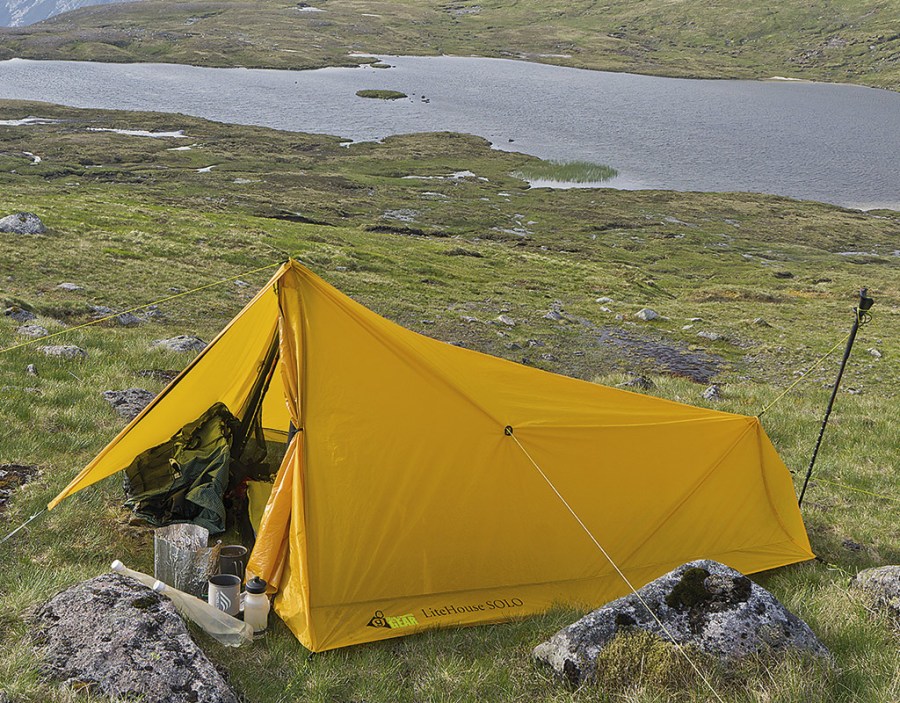The Litehouse Solo is a single-skin tent that pitches with trekking poles. It’s very light for the space, although as pegs aren’t included these have to be added to the weight. Gram-counter Gear offers a set of 13 pegs weighing 84 grams, which takes the total to 971 grams. All bar two of these are thin wire pegs though. I chose more substantial pegs and also added two for optional side guys so my peg set weighs 144 grams. With the pegs and guylines plus stuffsacks I ended up with a total of 1082 grams, which is still pretty light. Condensation can be a big problem in single-skin tents. To reduce this the LiteHouse Solo has angled mesh panels between the groundsheet and the walls. Any condensation that runs down the latter then goes through the mesh to the ground. There’s also a mesh inner rear door, a raised rear outer panel and mesh inner doors so ventilation is good, especially if the main door is left open. This doesn’t have a two-way zip though.
Although single-skin, the tent has a large porch for gear storage and cooking, with an inner door separating it from the groundsheet. Care has to be taken not to push gear off the groundsheet and onto the mesh panels. The LiteHouse is quite stable in strong winds, though it does flap a fair bit. This can be reduced by adding side guylines. Gram-counter Gear does a kit for this, weighing 32 grams and costing £16. I recommend it.
This simple, low-cost tent is well worth considering, especially if you use trekking poles.
First published: May 2013







